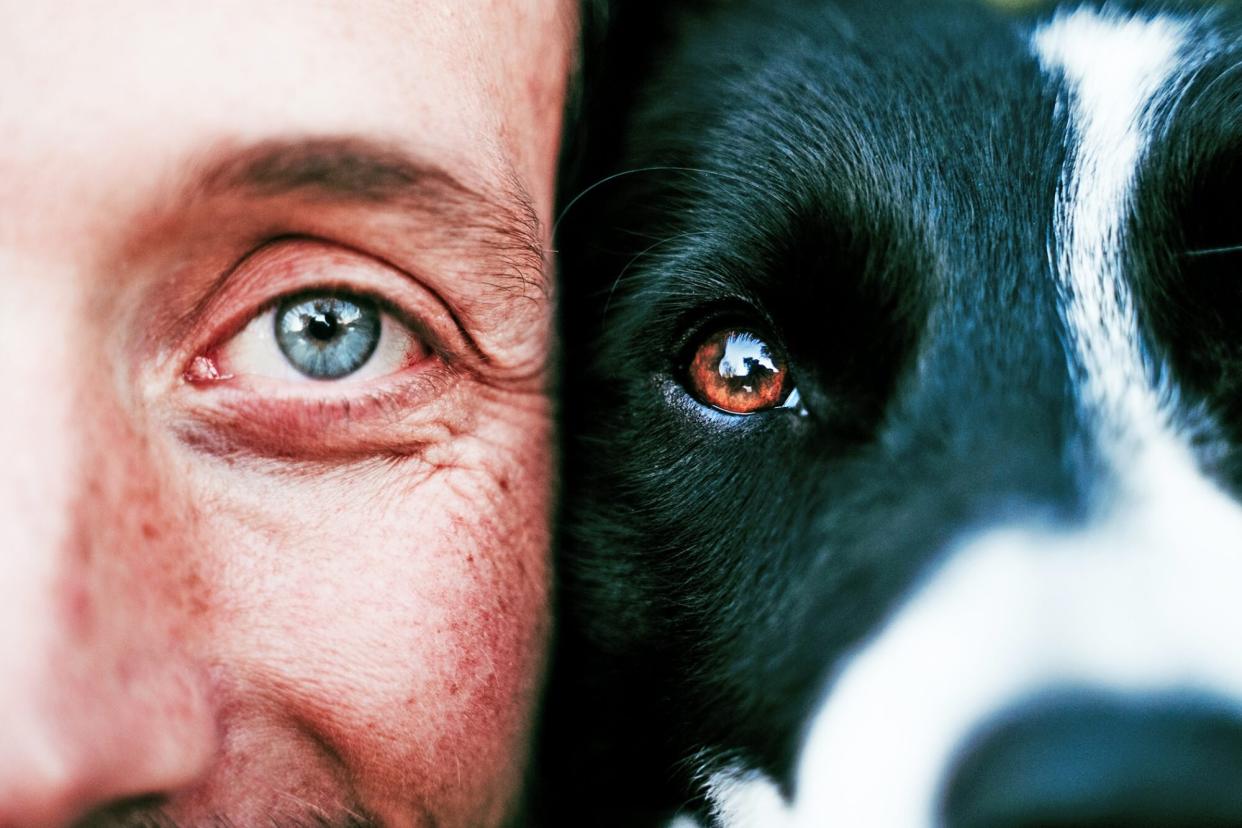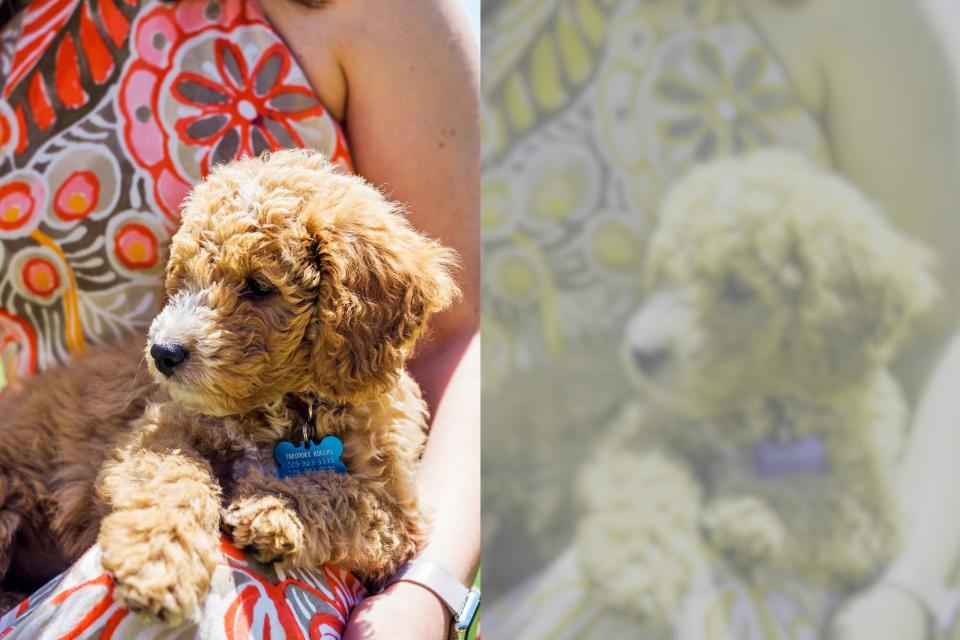How Do Dogs See the World? A Veterinary Ophthalmologist Explains

Westend61 / Getty
Dogs are known for their super sniffers, but what about their vision? You might be surprised to learn there are a few ways that your vision is better than your dog's. Just don't try to race your pup in the dark. Spoiler: You'll lose. We talked with Jaycie Reisberg, DVM, DACVO, a veterinary ophthalmologist at MedVet Salt Lake City, to get the lowdown on how dogs see the world.
How Is a Dog's Vision Different from a Human's?
People and dogs have very different vision. Both have light-sensitive cells called cones and rods at the back of the eye. But people have more cones, which are related to color and vision sharpness. Dogs have more rods, which are good at picking up motion and seeing in dim light.
That means people can see things in finer detail, both close-up and farther away. "Our vision is much better than a canine's," Reisberg says. "If you hold your hand close to your dog's face, it'll be a bit blurry. And they don't see as crisply as we do for distance either. Instead of 20/20 vision, dogs have the equivalent range of 20/40 to 20/50." That means that what you clearly see at 20 feet, your dog sees as if he was standing 40 or 50 feet away.

KCULP / Adobe Stock A visual representation of human vision versus dog vision. Instead of 20/20 vision, dogs have the equivalent range of 20/40 to 20/50."That means that what you clearly see at 20 feet, your dog sees as if he was standing 40 or 50 feet away. Dogs also only see in a spectrum of blue and yellow.
However, dogs are much more sensitive to detecting motion. That's why you might see a rabbit freeze when a dog walks by. It's easier for a person to spot a bunny blending into the landscape than it is for a dog. But once that rabbit moves, watch out!
Can Dogs See Color?
The world simply isn't as colorful for dogs as it is for people. Canines are dichromatic, having two types of cones in their eyes. So they see everything in a spectrum of blue and yellow, even you. Even grass isn't green to them. On the other hand, people are trichromatic, having three types of cones. Unless color blind, people also see red and green.
RELATED: Can Dogs See Color? The Truth About Color Blindness in Canines
Can Dogs See in the Dark?
Dogs see better in the dark than people do because they have more rods in their eyes. Most breeds also have a tapetum lucidum, which is a shiny layer in the back of the eye. It acts like a mirror and lets light bounce back and forth against the lens. It enhances how much light the eye absorbs.
So there's no need to leave the light on for dogs—they can see just fine with ambient lighting (from streetlights or the moon) at nighttime. Older dogs are the exception, says Reisberg. "As dogs age, their night vision worsens. That's when you'll typically see a dog refuse to walk up the stairs at night."
Can Dogs Be Nearsighted or Farsighted?
Some breeds may run a little bit nearsighted or farsighted, says Reisberg. "The most classic and well-studied example is Labradors. They can inherit nearsightedness, which may affect their field performance." But other than needing super-sharp vision for dog-sport competitions, you wouldn't be able to tell if your dog had slightly worse vision than his fellow pups.
Signs Your Dog Has Vision Problems
Like in people, vision tends to worsen in dogs as they age. It's normal for senior dogs to be hesitant about going on stairs or walking around in dim light. Some signs your dog might be going blind or developing a vision problem include:
Bumping into things
Hugging the wall
Avoiding everyday activities, like going for a walk
Acting clingy, nervous, or aggressive in new settings
The best way to keep your pooch's peepers healthy is to provide a good, balanced diet and keep up with annual vet visits. If you're concerned about your dog getting nutrients important for eye health—like vitamin A and omega fatty acids—you can also ask your veterinarian about adding a pet vitamin. Be sure to take your pet for routine check-ups too. That gives your vet a chance to catch problems earlier when they're still treatable.

